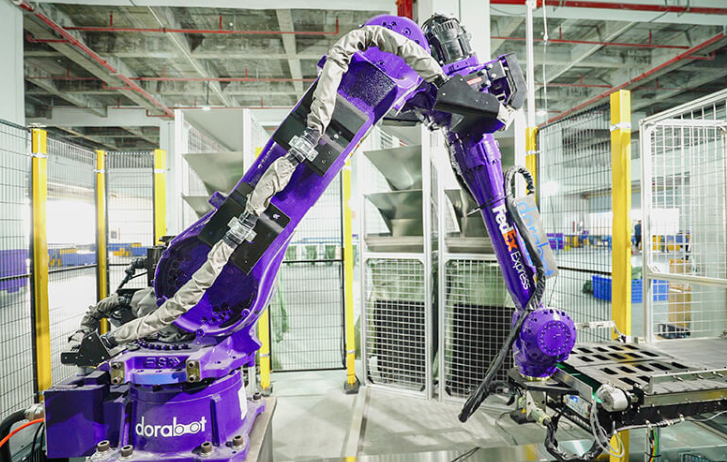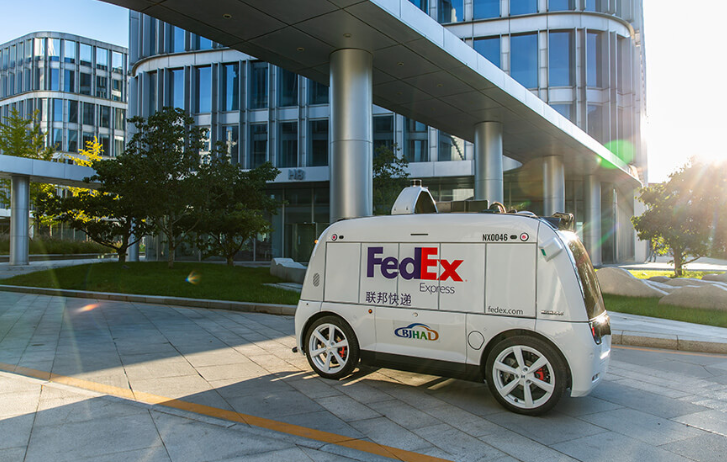
The Big Tech That’s Shaping Tomorrow – Today
By FedEx | First published: May 26, 2022
From AI bots to autonomous vehicles, our tech-driven future will be filled with innovations that can transform how small businesses operate and grow.
Technology governs our existence: how we live, work, travel and connect as humans. The most significant innovations in emergent tech of the last decade - AI, autonomous tech, blockchain – all continue to advance. And the biggest tech innovations of our time are now interconnected. It’s this seamless integration that has become the gamechanger: set to change everything from infrastructure to transport to how you order your pizza delivery.
So exactly how smart does our future look? Buckle up as we explore the three technology trends that are shaping tomorrow:
1. ‘Smart’ tech is combining AI and data.
There was a time when smart simply meant something that could connect or ‘talk’ to other household tech, or devices that were powered by the internet: smartphones; smart TVs; smart in-car audio. But today, we can safely assume that when someone’s talking smart, they mean powered by artificial intelligence (AI) and how we are storing, processing, and using data.
The marriage of AI and data clouds is allowing us to operate at increasing levels of sophistication and precision in society and in business. At FedEx, our business is undergoing constant and rapid transformation thanks to tech.
We’re teaming up with Microsoft and putting data to work through our digital and physical networks. Through our data transformation, we’re focused on delivering an unprecedented level of insight and control into the global movements of goods for faster, more efficient deliveries. And this is just the beginning.
A whole new world of data means that any business big or small can now digitize its supply chain by leveraging data to drive breakthrough real-time inventory tracking and logistics management. The progress is ground-breaking.
It’s typically machine-learning algorithms that power the benefits of AI. It’s become impossible, in many ways, to imagine life without it. From Siri to Alexa, AI has permeated the tools and apps we use to carry out everyday tasks and navigate our leisure time. From driving assistants and customer service to language translation and more sophisticated ways to use data, AI is everywhere.
And if you’re an SME, AI is truly the business tool for you. AI software can be used to automate processes in manufacturing, warehouse deployment, and inventory, or simply arrange the work rotas of your employees. It can even help you understand your customers better, thanks to tech that can analyze buyer behavior patterns and map audience traits.
2. AI is also supercharging robotics
AI goes hand in hand with robotics – another trend that continues to gather pace. Robots have gone from obscure and experimental tech to mainstream stalwarts of the service industry. We see bots in our shopping malls, airports, and hospitals – so much so that in the most developed Asia Pacific countries, we barely give them a second glance. In the healthcare industry, of course, they can help save lives, but they also have less critical functions, smoothing the wheels of industry.
At FedEx, we’re taking advantage of AI robotics tech in our warehouses. We have launched an AI-powered intelligent sorting robot in China to sort inbound and outbound packages. As the growing e-commerce sector makes our warehouses busier, we can re-allocate our team members to focus on more important tasks requiring uniquely human skills.
It’s the integration of AI into robots – the ‘brain’ capable of algorithm learning and interpreting conditions – that have made them so effective. Of course, this technology is something we are keen to put into action ourselves.
We hope to see this type of technology used in the way we service our customers throughout the region in the future – ultimately making life easier for small businesses.
3. Autonomous vehicles and the future of mobility
The future of mobility is an extremely hot topic right now. Transportation is arguably undergoing the biggest shake up since the introduction of the steam locomotive or the first passenger aircraft. Future mobility is looking to solve three key pain points: safety, sustainability, and convenience.
The new wave of transportation - from electric vehicles to passenger drones – can help bring about a cleaner world with fewer emissions in our cities as we work globally towards net-zero and beyond.
Autonomous vehicles – driverless, with their own ‘brain’ and ability to map and detect their environment through sensors, satellite technology, and other means – have the goal to ultimately remove human error, meaning more safety on our roads and in our communities.
These vehicles are expected to help solve the ‘last-mile problem’ – getting goods through the final mile to the destination. Autonomous technology is helping to close this gap, which in turn is better for urban air quality and the amount of energy or fuel consumed per capita.
FedEx recently started testing autonomous delivery vehicles in Beijing, China, in collaboration with Neolix. Pushing forward into a more sustainable, intelligent era for logistics is the logical next step for our industry. The zero-emission, all-electric delivery vehicle is powered by L4 level autonomous technology. The cargo box can also be converted into a temperature-controlled compartment and a smart parcel locker.
The rapid growth of e-commerce requires more flexible and efficient digital logistics solutions to enhance last-mile delivery. Autonomous driving technology and delivery bots are just two of the options that can help transform how we move goods around the world and in and out of urban areas.
A brave new world
So, there you have it. As we look ahead in 2022, we predict that we’re going to see even greater opportunities for the intersection – and integration – of our digital and physical worlds. Online environments are increasingly mirroring our real ones – whether through online shopping, immersive and experiential retail, or online avatars for everything from customer service to gaming, education, and dating.
Remember – tech isn’t something that only big business can afford. There’s software and apps of every size and scale that businesses of all sizes can implement into their daily workflow. By doing so, you can streamline processes, improve efficiency, and ultimately turn more profits for your enterprise - something every business should be striving for.
Excited about the future of innovation in Asia? Head over to our tech and innovation page for the tips and trends that can help launch your business into tomorrow.
SHARE THIS STORY
- Generative AI: A New Frontier
- How To Ship A Giant Panda
- How To Make Freight Shipments Work For Your Small Business
- The Rise Of Intra-Asia Trade: Opportunities In The China-Southeast Asia Corridor
- Where Do Old Planes Go When They Retire?
- What’s So Dangerous About Coconuts? Your Guide To Dangerous Goods Logistics
Sign up now and save on your shipping rates!
Sign up now and earn discounts by shipping instantly with FedEx Ship ManagerTM at fedex.com.
Recommended For You

How Big Data Is Delivering The Future
As supply chains become smarter, FedEx APAC President Kawal Preet examines how big data and analytics transform supply chain management and logistics.
Read More
Top 3 Logistics Trends To Watch: Data and Digitization
Logistics providers are turning into tech drivers, with the increased use of AI and big data in managing supply chains.
Read More
The APAC CEO Transforming How Businesses Harness Data
Karen Kim’s cloud data platform, Human Managed, equips enterprises with the data intelligence they need to operate more efficiently.
Read More


